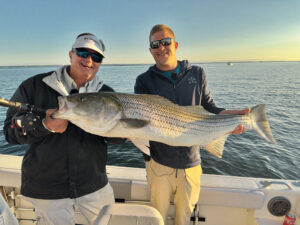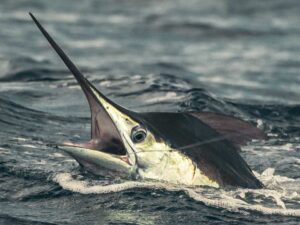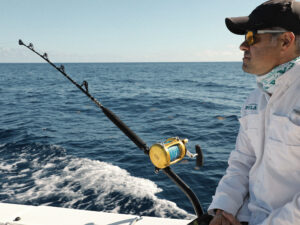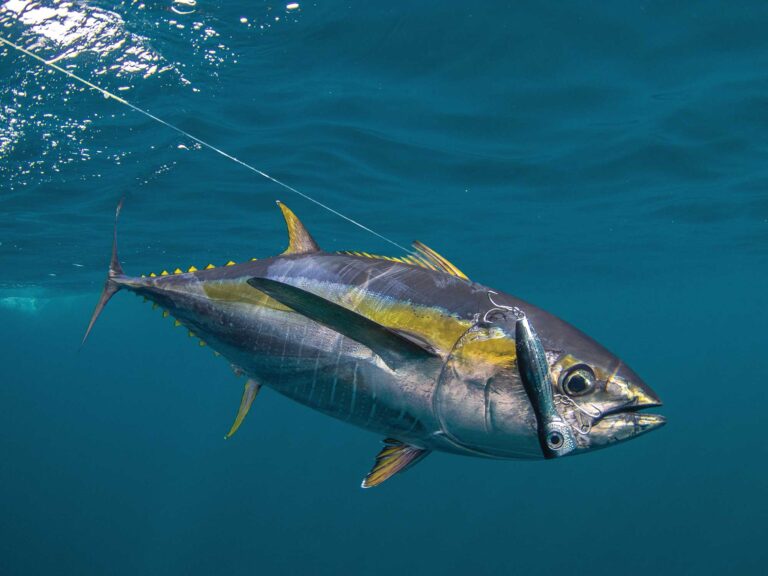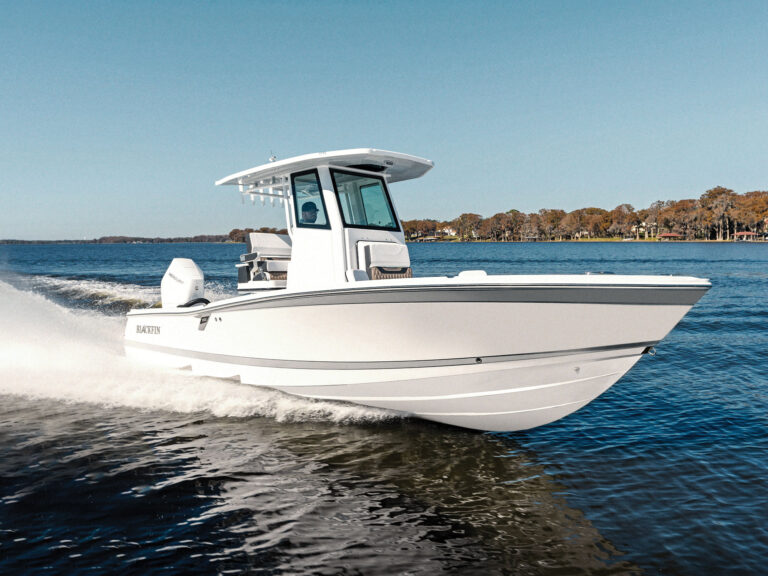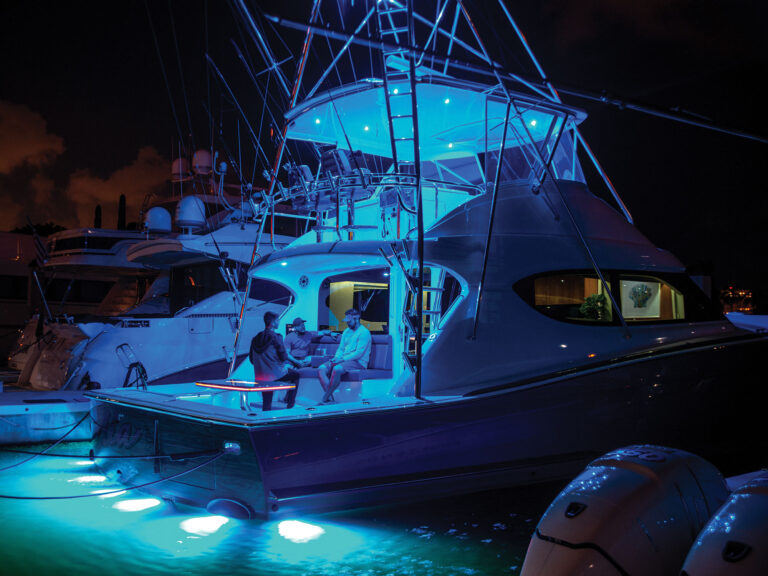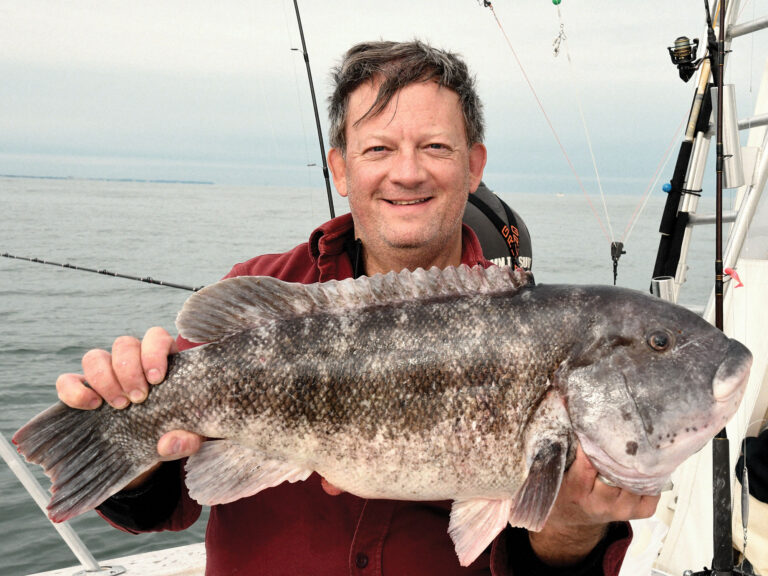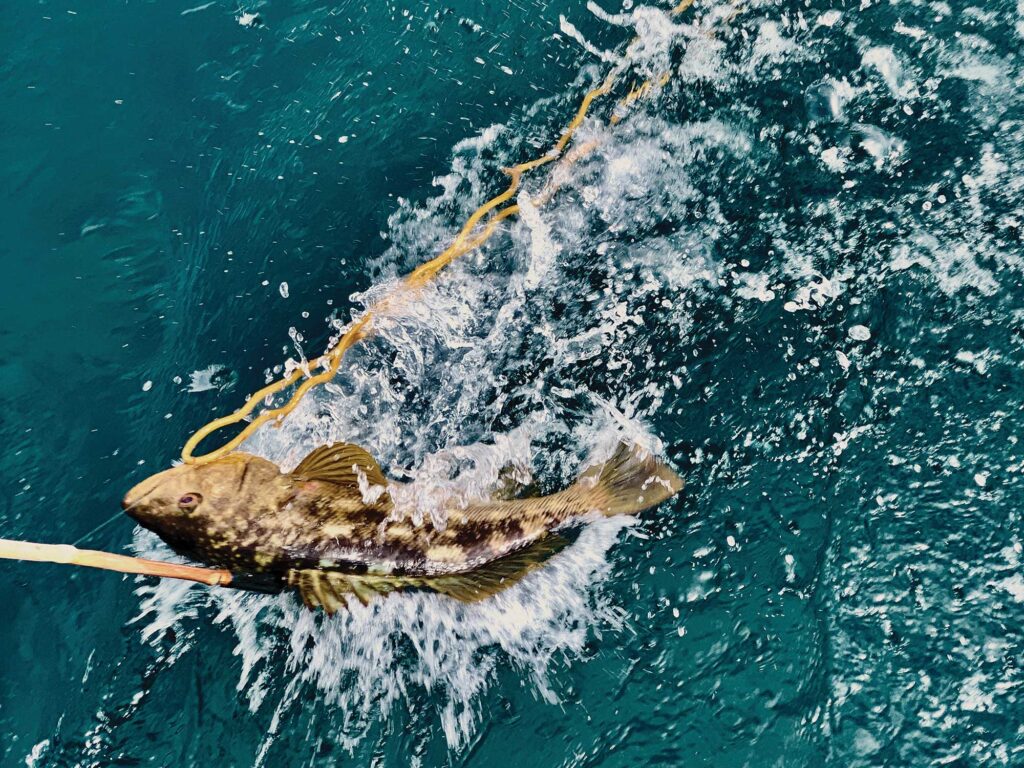
You’ve stayed at the rail all day, changing your bait frequently and looking for the liveliest sardine you can find in the baitwell. You dropped down to 20-pound line with matching fluorocarbon leader and a No. 2 light-wire hook. Finally, your bait takes off like a terrified cat with a growling dog hot on its tail. Then there’s that thump, and you’re bit. You count to three, put the reel in gear and swing. You’re on!
This is a familiar experience for anyone who has fished off the Pacific Coast, especially anglers on single- and multiday boats. Now the fight begins. However, sometimes an angler can make one little mistake, and it’s over. So, what are those blunders that will take you from hero to zero? Here are 10 things to avoid. These tips hail from California’s bluewater headboats, but any offshore angler should remember them when hooked to a giant.
Not Having Your Drag Adjusted Properly
“You’d be surprised how many good anglers panic when they hook a big fish and tighten their drag as soon as the fish pulls a little line, even though they have 300 yards of line,” says Capt. Aaron Graham, owner of the Native Sun sport-fishing boat out of San Pedro, California. “Similarly, if you forgot to check your drag and it’s set too tight, you can count on breaking off your fish, or if it’s too loose, you’ll be out of control and have a hard time stopping the fish and gaining line.”
Set your drag properly—based on the pound-test of your line and the fish you’re after—before you start fishing, and don’t readjust it. Set it and forget it. (If you trust your knots, a drag setting of 30 percent of the line’s pound-test rating is a tried-and-true option.) Too many anglers dump a big fish because they were playing with their drag instead of fighting the fish.
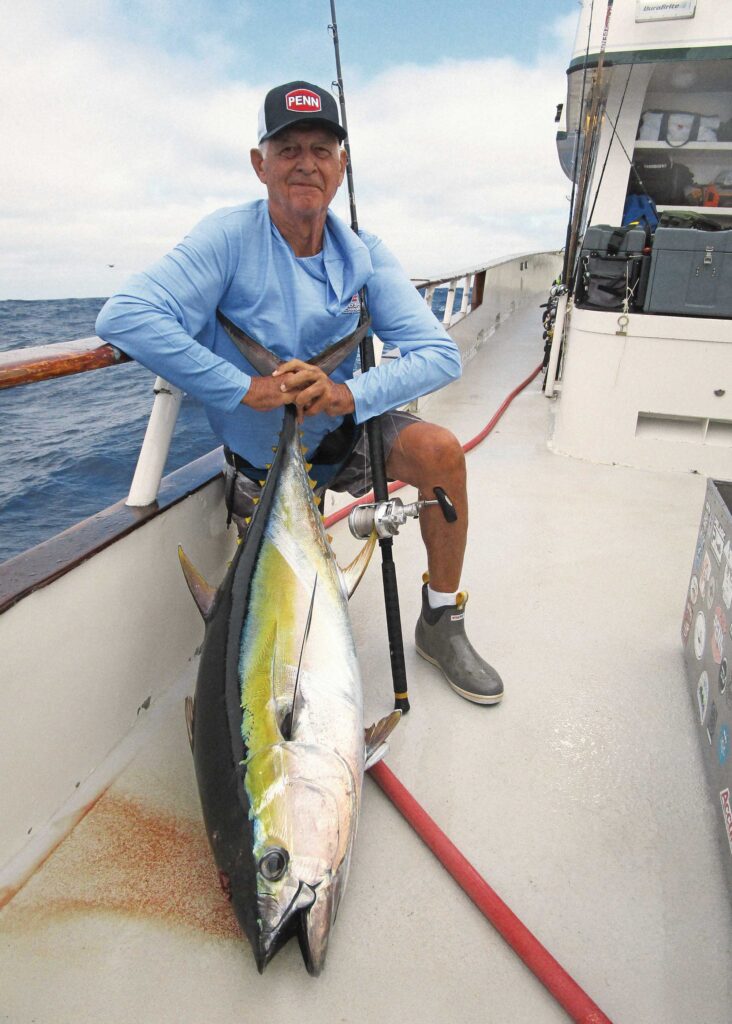
Not Staying in Front of Your Fish
If your fish runs to the left or right, you’d better chase after it and keep it in front of you, or you’ll likely cross someone’s line and get tangled or cut off. Remember the old adage, “No angles, no tangles.”
When you’re chasing a fish up or down the rail, do the “walk and wind.” Walk fast to keep up with your fish, and keep winding the reel handle as you go. If you don’t, you’re going to give the fish slack line and an opportunity to spit the hook. Always keep tension on your line. Otherwise, you can say, “Adios, amigo.”
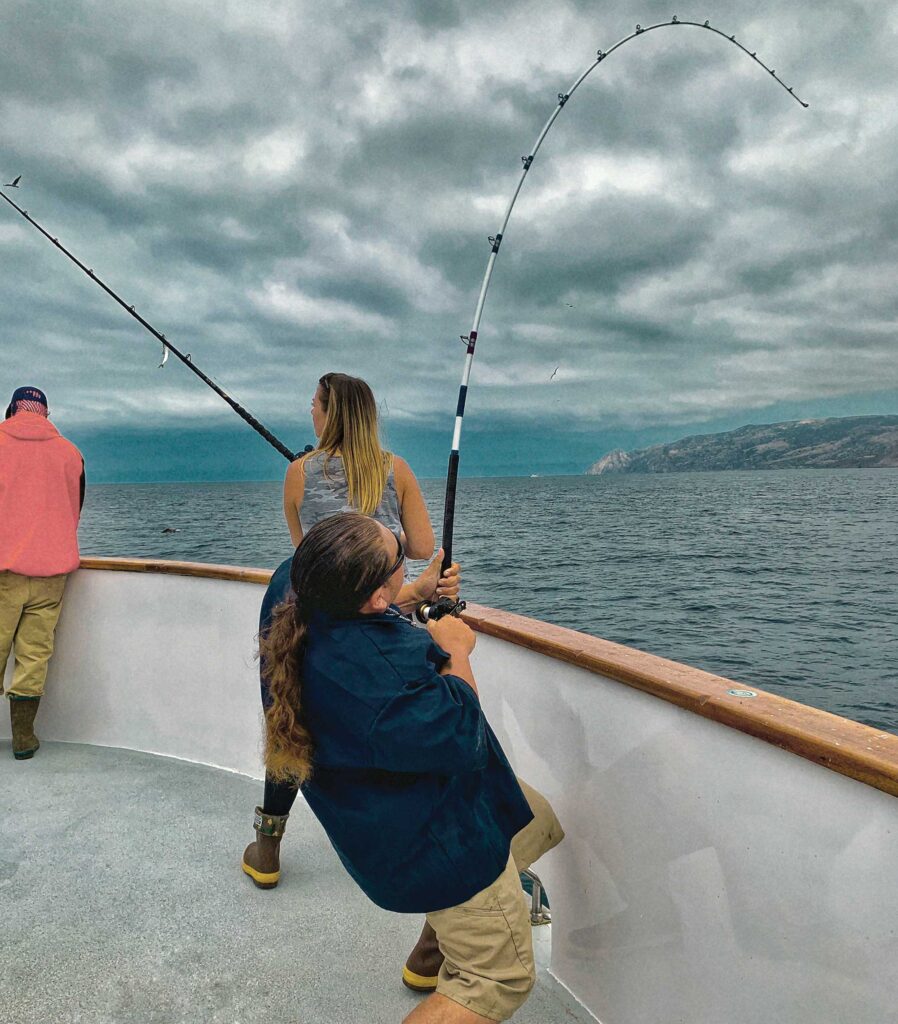
Pulling Too Hard
If you hook a bigger fish and you’re fishing near a reef or rocky structure, that fish is probably headed for the structure and its razor-sharp edges. In those cases, you need to pull hard and reel fast to turn the fish’s head. Of course, your tackle will dictate just how hard you can pull. Heavier line will give you an advantage, but that’s not always what you’re using.
If the fish takes you into the kelp and you’re using a kelp-cutter rig—braided line with a short fluorocarbon leader—the braid often saws through the kelp. But if the fish just won’t budge, try putting your reel in free-spool and wait to see if it swims out. Sometimes releasing tension on the line makes the fish think it’s free, and it’ll leave its lair. That’s the time to pull hard and crank fast. No pumping—just straight-wind it so it doesn’t have a chance to turn its head. I’ve landed some big calico bass that way.
Pulling too hard can lose a fish too. If you’re using light line, too much pressure will break you off. Or if you’re using heavy tackle and fighting a tuna, pulling too hard over time can wear a hole in its mouth and result in pulling the hook. I’m more likely to back off a bit now, especially with the longer, more parabolic rods and lighter line needed to get bit. Slow and steady wins the race. And you’re more likely to enjoy the fight.
Not Paying Attention to Other Anglers’ Lines
Learn how to play the over/under game. Be vocal: Let others know if you’re coming down the rail and if they should go over or under your line. Try to stay a step ahead of the game and use your peripheral vision to try and avoid other lines. Be the LeBron James of fishing. Try to see the floor and anticipate what’s going to happen, before it happens.
And beware of slow-moving gamefish. They can fool you. On a trip to Catalina Island, I hooked a calico bass on a fly lined sardine. It didn’t feel that big, and I was slowly winding it in when it suddenly turned into a yellowtail and took off. It completely caught me by surprise. Either it wasn’t aware it was hooked or was just swimming toward me at bass speed. While I maintained tension on the yellow, I wasn’t prepared for the sudden 90-degree turn at high speed and lost it in a tangle. It happens, but it also shows you have to keep up with your fish and expect the unexpected.
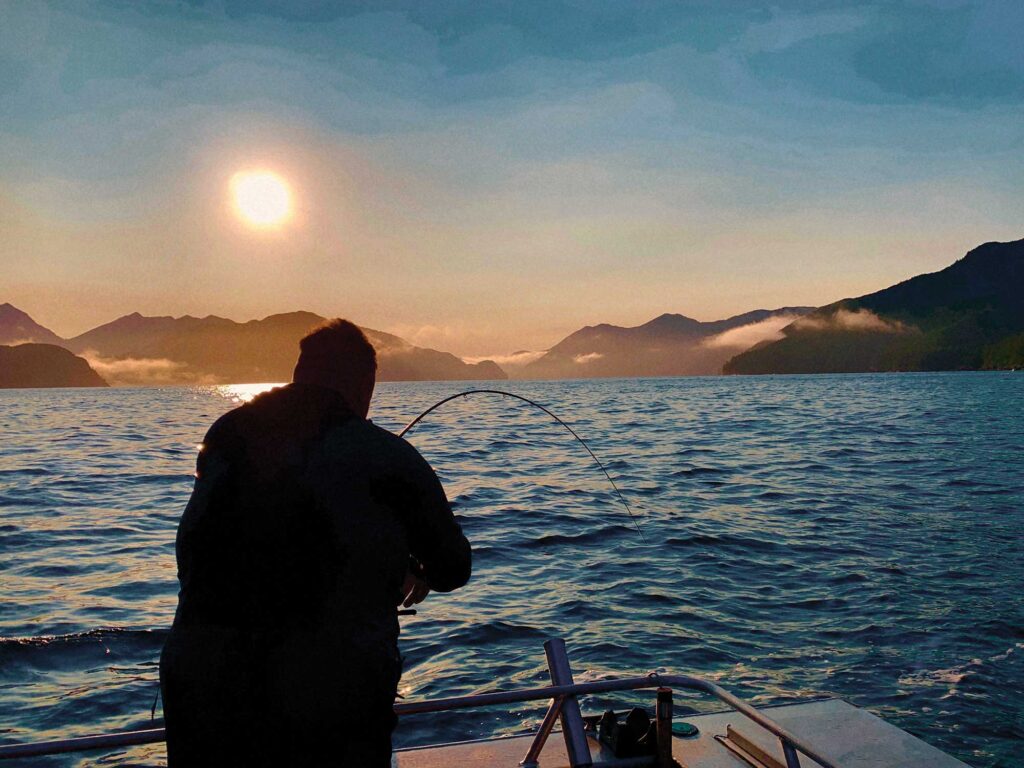
Pumping Instead of Straight-Winding
Once hooked up, many anglers put the rod butt against their hip to give them more leverage in fighting the fish. That makes sense when the fish is straight up and down and you’re trying to finish it off. But if the fish is still hot and you have to follow it, you’re better off keeping the rod under your armpit, which gives you more maneuverability, especially on a crowded boat where you have to weave your way through a maze.
Capt. Dave Hansen, of YourSaltwaterGuide.com, believes the No. 1 mistake anglers make when hooked up is jerking or pumping the rod instead of holding it straight up to put a bend in it. “Just stay against the rail so you can see where your line is at, and point your rod tip up with your reel against your chest to keep a constant bend in your rod,” he says.
“We’re fishing not hunting, so don’t aim your rod at the fish. When the fish wants to run, great, let him. All that line out makes the fish work harder with more drag or friction on the line. When he stops running, hold the rod high and, ‘Turn the handle, Randall!’ Most people just don’t apply enough pressure on a fish. And never put your thumb on the spool. Tackle manufacturers have spent millions developing their drag systems. Let them do their job instead of burning up your thumb and losing that big fish.”
Using Braid Instead of Mono
“Guys would land a lot more gamefish if they used monofilament line, or spectra backing with a very long mono top shot, and perhaps a fluorocarbon leader,” says Pat Obrien, captain of the popular sportboat Aloha Spirit out of Oxnard, California. “The mono acts as a shock absorber, and the hook up-to-land ratio is much higher. Go slow, pay attention to what’s going on around you and where your line is. It may take longer to land a fish if it’s big, but if you straight-wind without pumping the rod, you should land that fish 90 percent of the time. Mono is a difference-maker.”
Not Checking Your Line for Frays
The bite is finally on. You want to get a bait out there fast so you don’t miss out. Did you check your line for frays after that last fish you caught or after getting stuck in the kelp?
“Run your fingers over the top 6 to 10 feet of line every time after catching a fish,” says Sergio Fainsztein, of the Angler Chronicles TV show and on-the-water fishing schools. “If not, you know what happens next. And don’t forget to periodically run a Q-tip over your guides to check for grooves that will fray your line. Many times, an angler will keep breaking off fish because they didn’t know they had a cracked or grooved guide.”
Read Next: How to Best Fight Fish
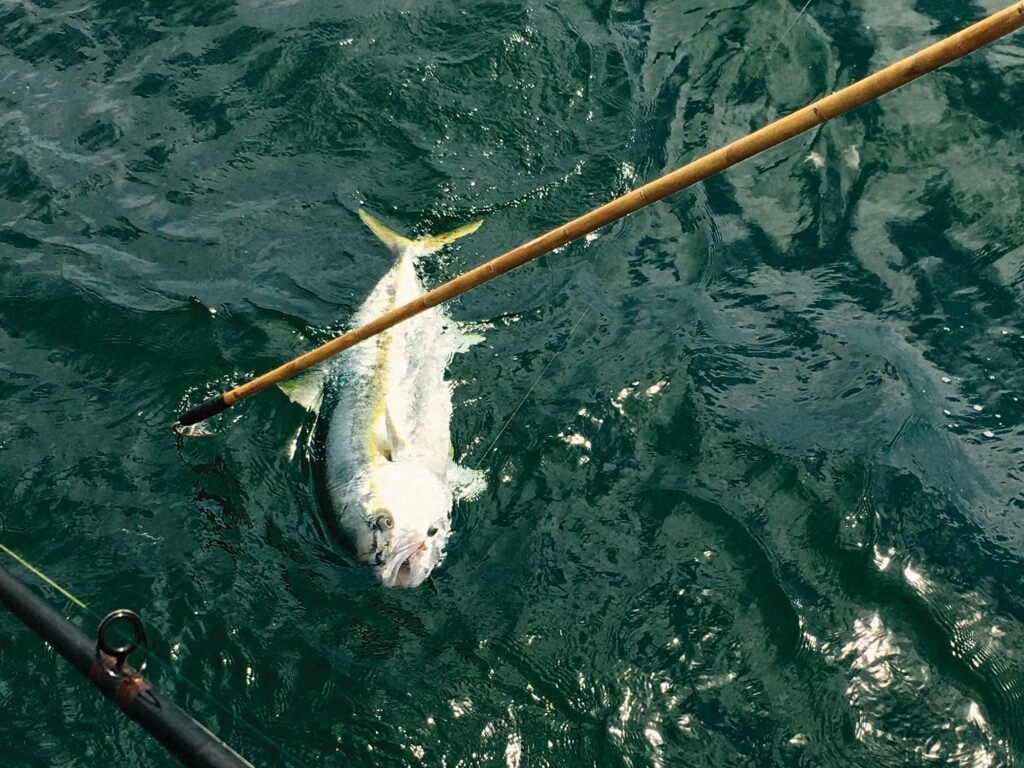
Not Laying the Fish Out for Gaffing
Do your part to help the deckhand get the fish on the boat. When the fish gets close to the surface and the deckhand is standing by with the gaff, keep the fish’s head in the water and gently pull it toward the gaff. Lay it out so the deckhand has an easy shot at sticking it. Too many fish are lost at gaff due to angler error and tackle failure. Avoid the heartbreak. Stay calm and do what the crewmember tells you.
Not Free-Spooling After the Fish Is Gaffed
Be sure to put your thumb on the spool with the reel in free-spool so that if the fish frees from the gaff, line will come off the reel to cushion the fall and prevent your line from breaking. If you don’t keep tension on the spool with your thumb, you’ll get a monster backlash and still lose the fish.
At the end of the local Southern California dorado invasion a few seasons ago, I hooked a bull that put on quite the aerial display and pulled line like crazy. Each time it saw the boat, it took off again—a tough, tough fish. The deckhand lined up for the headshot with the gaff and connected, but as the fish was about to clear the rail, it twisted off the gaff. Fortunately, I had the reel in free-spool with my thumb on the 15-pound line, and the fish hit the water without breaking the line. Bonus time: I got to fight the fish all over again. The gaff held the second time around, but if I hadn’t had the reel in free-spool the first time, it would have been game over.
Not Listening to the Crew
Sometimes anglers are so caught up in the heat of the battle with a big fish that they tune everything else out. Being focused is good, but not listening to the crewman or captain offering direction on what to do—or what not to do—can result in a lost fish. Whatever situation you’re in, the crew has seen it countless times before and can predict what’s going to happen next. They want you to land that fish even more than you do. Listen to what they say.
Keep some of these potential mistakes in mind the next time you hook a good one, and chances are it will end up on the deck.

